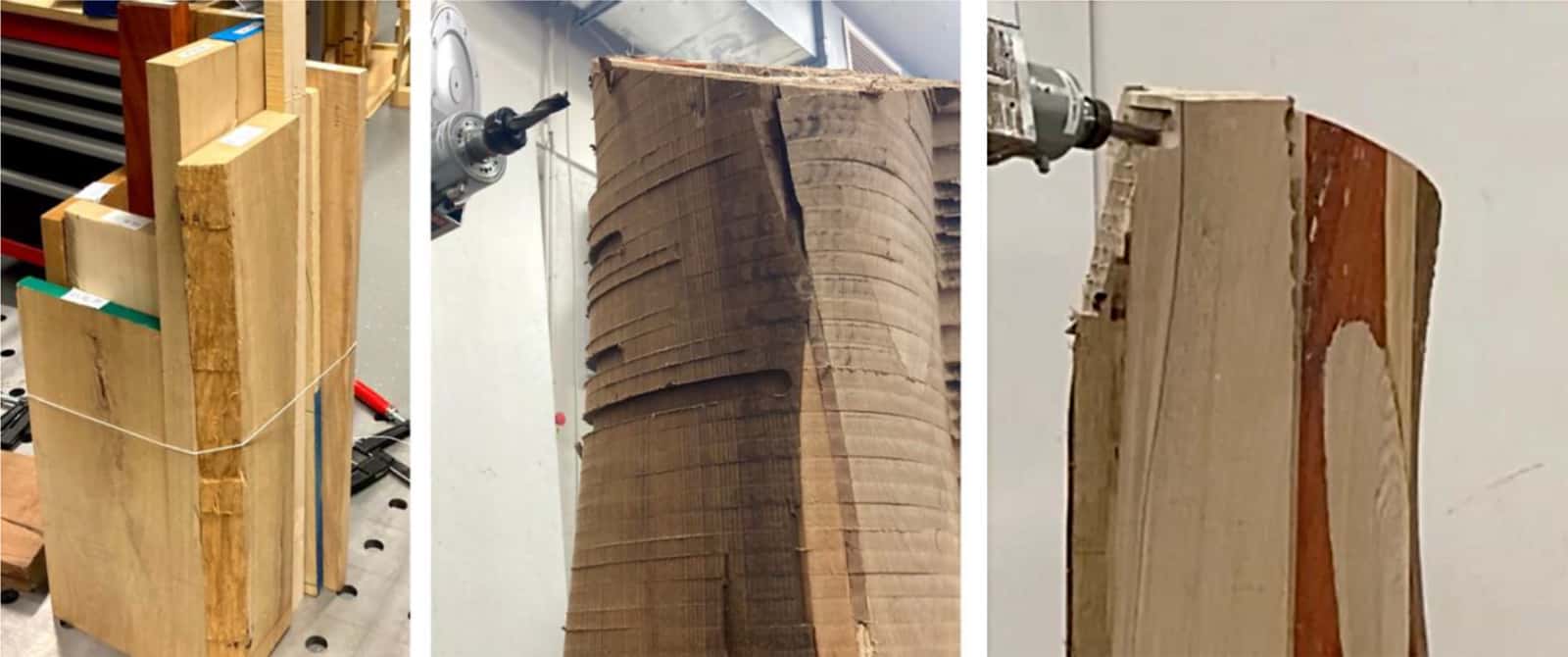Downloads
Keywords:
architecture, building construction, CO2, circular- and AI-supported robotic approachesAbstract
The construction sector accounts for about 40% of material-, energy- and process-related carbon dioxide (CO2) emissions , which can be reduced by introducing data-driven Circular Economy (CE) approaches . For instance, Design-to-Robotic-Production (D2RP) methods developed in the Robotic building lab, at Technical University (TU) Delft are embedding data-driven systems into building processes. Their potential to contribute to sustainability through increased material-, process-, and energy-efficiency has been explored in several case studies that are presented in this paper. The assumption is that by using these methods and reclaimed wood to minimize demand for new resources and reduce deforestation along the way, CO2 emissions can be considerably reduced.
How to Cite
Published
Issue
Section
Categories
References
Ashby, M. F. (2024). Materials and sustainable development (Second edition). Butterworth-Heinemann. DOI: https://doi.org/10.1016/B978-0-323-98361-7.00003-8
Bier, H. (2018). Robotic Building as Integration of Design-to-Robotic-Production and -Operation. In Robotic building (S. 97–120). Springer. DOI: https://doi.org/10.1007/978-3-319-70866-9_5
Bier, H., Hidding, A., & Galli, M. (2020, Oktober 14). Design-to-Robotic-Production and -Assembly for Architectural Hybrid Structures. 37th International Symposium on Automation and Robotics in Construction, Kitakyushu, Japan. https://doi.org/10.22260/ISARC2020/0207 DOI: https://doi.org/10.22260/ISARC2020/0207
Bier, H., Khademi, S., Van Engelenburg, C., Prendergast, J. M., & Peternel, L. (2022). Computer Vision and Human–Robot Collaboration Supported Design-to-Robotic-Assembly. Construction Robotics, 6(3–4), 251–257. https://doi.org/10.1007/s41693-022-00084-1 DOI: https://doi.org/10.1007/s41693-022-00084-1
Dokter, G., Thuvander, L., & Rahe, U. (2021). How circular is current design practice? Investigating perspectives across industrial design and architecture in the transition towards a circular economy. Sustainable Production and Consumption, 26, 692–708. https://doi.org/10.1016/j.spc.2020.12.032 DOI: https://doi.org/10.1016/j.spc.2020.12.032
Oskam, P., Bier, H., & Alavi, H. (2022). Bio-Cyber-Physical ‘Planetoids’ for Repopulating Residual Spaces. SPOOL, 9(1), 49–55. https://doi.org/10.47982/spool.2022.1.04 DOI: https://doi.org/10.47982/spool.2022.1.04
Peters, J., Tedrake, R., Roy, N., & Morimoto, J. (2011). Robot Learning. In C. Sammut & G. I. Webb (Hrsg.), Encyclopedia of Machine Learning (S. 865–869). Springer US. https://doi.org/10.1007/978-0-387-30164-8_732 DOI: https://doi.org/10.1007/978-0-387-30164-8_732
United Nations General Assembly. (1987). Report of the World Commission on Environment and Development: Our Common Future, Annex to document A/42/427 – Development and International Co-operation: Environment. http://www.un-documents.net/wced-ocf.htm





